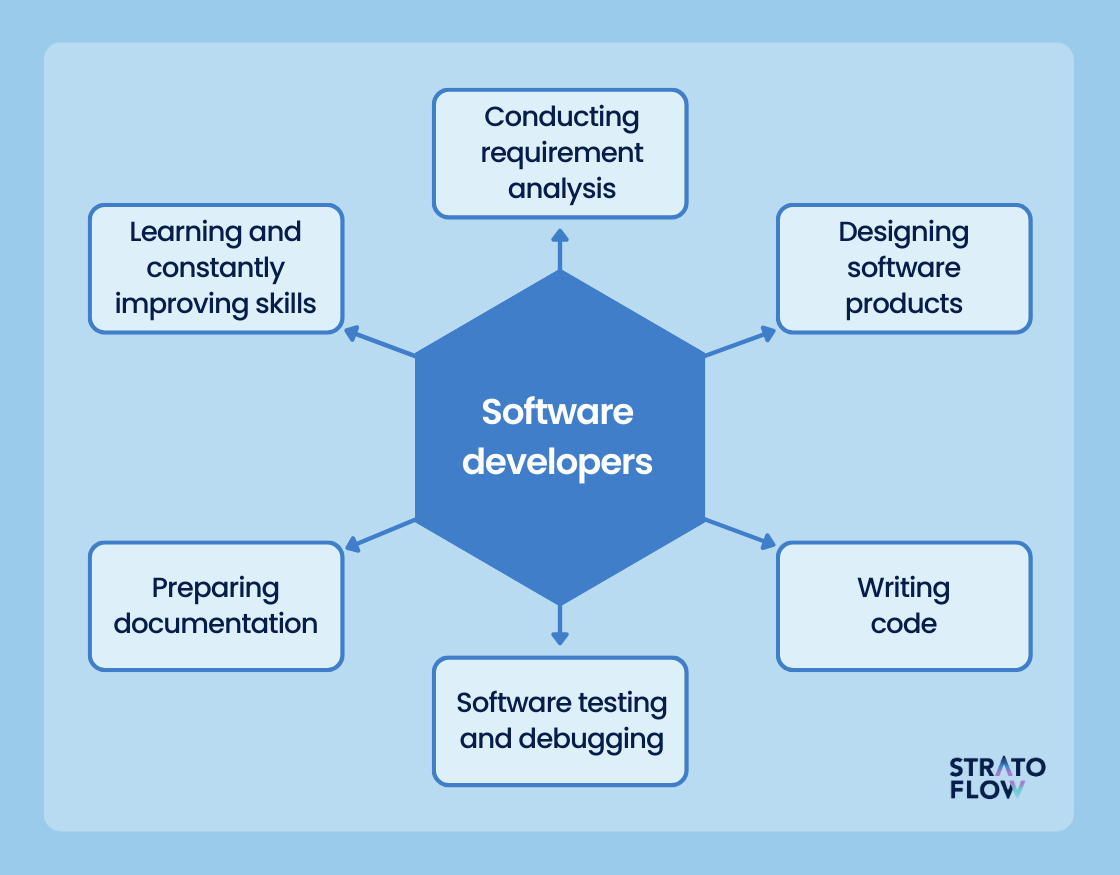Simplify Your Projects with Reliable Software Development Staff Augmentation
Simplify Your Projects with Reliable Software Development Staff Augmentation
Blog Article
Devoted Developers vs. In-House Teams: Which Is Right for You?
The decision in between utilizing dedicated designers and maintaining an in-house group is a significant one that can impact the trajectory of your jobs and total organization technique. Committed programmers give a degree of flexibility and specific expertise that can be advantageous for particular, short-term campaigns. Alternatively, in-house teams add to a natural company society and a nuanced understanding of long-term objectives. By analyzing crucial factors such as budget plan, job scope, and preferred control, you can better determine which method aligns with your business requirements. Nonetheless, the effects of this option expand past instant outcomes-- consider the wider effect on your business landscape.
Understanding Dedicated Programmers
The growing need for specialized abilities in the tech sector has actually resulted in the emergence of dedicated designers as a practical solution for several companies. These experts are commonly gotten on a job basis, allowing business to take advantage of certain expertise without the long-lasting dedication associated with permanent hires. Devoted developers are often ingrained within a customer's team, giving versatility and scalability to fulfill task demands.
This version enables organizations to access an international talent swimming pool, which is especially beneficial in a swiftly progressing technological landscape. Committed designers can be sourced from various geographical places, ensuring that business can locate the right skill established at affordable prices. They often bring a wide range of experience and knowledge, having actually serviced varied projects throughout various sectors.
Furthermore, committed developers can concentrate solely on the jobs at hand, improving productivity and effectiveness. They are outfitted to integrate perfectly into existing workflows, collaborating carefully with internal teams to accomplish task objectives. This method not just lowers the concern of recruitment and training however additionally permits organizations to continue to be agile, adjusting quickly to altering market demands and technological improvements.
Benefits of In-House Teams

In addition, internal teams often tend to have a much deeper understanding of the firm's mission, worths, and objectives. This positioning can boost employee involvement and motivation, as employee really feel a lot more linked to their job and the company's success. Furthermore, having a dedicated in-house group permits far better positioning of goals and methods, as these participants are regularly concentrated on the company's priorities.
Internal groups likewise facilitate quicker decision-making processes, as they can react extra rapidly to challenges and modifications. The recognized partnerships and familiarity with business methods permit streamlined operations and decreased miscommunication. Inevitably, the mix of a cohesive society, placement with organizational goals, and reliable communication makes in-house groups an important property for numerous companies, particularly those seeking to grow lasting growth and development.
Expense Factors To Consider
When assessing expense factors to consider, both in-house groups and devoted designers existing distinct financial implications for organizations. Engaging specialized programmers usually entails a pay-per-project or hourly rate model, which can be economical for organizations with fluctuating project needs. This approach permits versatility in scaling resources up or down, making certain that companies only pay for the services they need.
In contrast, in-house groups require taken care of costs, including wages, advantages, and overhead about his expenses such as workplace space and devices. While this version uses higher control and instant schedule of resources, it might result in greater lasting costs, specifically if the work does not validate a full-time personnel.
In addition, firms need to take into consideration the hidden costs associated with employment and training of in-house workers, which can additionally stress spending plans. In some situations, the time and sources invested in managing an internal team can diminish the company's core company objectives.

Project Administration and Adaptability
Job monitoring and versatility are important aspects that influence the option between internal teams and committed programmers. Devoted teams usually have actually established processes for taking care of projects efficiently, leveraging particular approaches like Agile or Scrum, which help with iterative progress and flexibility.

Ultimately, the option in see this site between in-house groups and committed developers hinges on the desired level of versatility and the certain job administration needs. Companies should assess their operational characteristics, project complexity, and resource accessibility to figure out which choice lines up best with their calculated goals.
Making the Right Option
Selecting the appropriate development approach-- dedicated programmers or in-house teams-- requires a mindful evaluation of various aspects that straighten with a business's tactical objectives. software development partner. Think about the nature of the job. If it demands specialized skills or a quick scale-up, devoted programmers might be better. Conversely, in-house teams can provide far better continuity and assimilation with existing personnel.
Next, assess your budget plan. Devoted programmers frequently provide a cost-effective option for temporary projects, while internal groups might incur greater long-lasting expenses due to incomes, advantages, and expenses expenses. Examine the degree of control and cooperation wanted; internal groups usually promote more powerful communication and placement with firm society.
If prompt results are essential, specialized developers can be onboarded swiftly, whereas developing an in-house group takes time for employment and training. If continuous advancement is vital, investing in an in-house team might produce better returns over time.
Final Thought
In verdict, the choice between committed developers and in-house teams rests on job needs and organizational goals. Dedicated designers provide versatility and customized experience, making them appropriate for temporary campaigns. On the other hand, in-house groups cultivate a cohesive culture and much deeper positioning with lasting goals. Mindful assessment of spending plan constraints, project timelines, and wanted control degrees is essential for figuring out one of the most appropriate strategy, ensuring alignment with tactical concerns and functional performance.
The choice between utilizing devoted developers and maintaining an internal group is a considerable one that can affect the trajectory of your jobs and total organization technique.Job management and versatility are vital aspects that affect the try this out choice in between in-house groups and specialized programmers. software development partner.In comparison, internal teams may excel in keeping a consistent task administration framework due to their experience with the organization's culture and lasting goals. Committed designers commonly provide an economical option for short-term tasks, while in-house teams may sustain higher lasting expenses due to salaries, benefits, and expenses expenses.In verdict, the decision in between internal teams and specialized programmers hinges on task requirements and business objectives
Report this page